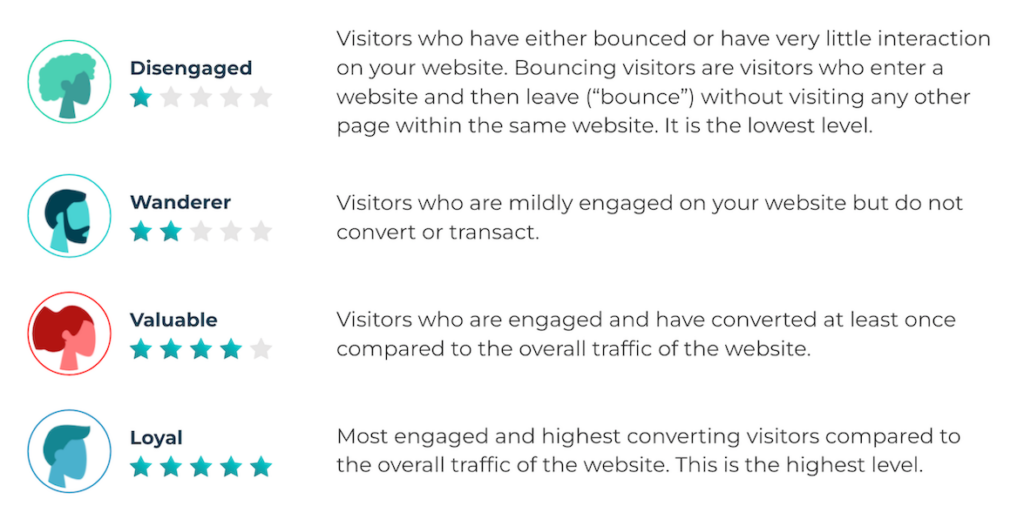For the second blog in our series on a data-driven approach to customer-centric marketing, we talked with our partner Ryan Lucht, Director of Strategy at Cro Metrics, and AB Tasty data expert Hubert Wassner, who explore the evolution of customer needs, why understanding them is so important for brands today, and the role experimentation plays in meeting those needs. Be sure to check out the series introduction and part 1 if you missed those.
What do we mean when we say “customer needs”?
Today’s savvy customers expect a lot from brands: connected journeys, personalization, innovation, data protection. They’re used to seamless online interactions. They want to find products easily. They want a frictionless experience and flexible payment methods. And if a brand doesn’t deliver, they’ll switch to one that does.“It’s a good thing, it’s forced us to become a lot more customer-centric and make our websites easier to use,” says Ryan.
And it pays to meet customer needs and deliver great customer experiences. In a 2020 CX poll, 91% of respondents said they were more likely to make a repeat purchase after a positive experience, and 71% said they’d made a purchase decision based on experience quality.
Why is it important for businesses and brands to understand customer needs?
Ryan believes it’s vital to offer customers the right information at the right time. “Customer needs look different at different stages in the customer journey. When you’re running an experimentation program, the order in which information is presented matters. If you dive into the details too soon, you risk overloading or boring your visitors, but if you wait too long to introduce core information like a refund policy, or a piece of your value proposition, you’ll lose business.
“One of our clients, a leading chain of gyms in the United States, is a good example. A crucial part of their strategy is reassuring customers they’ll feel comfortable in their gyms – that their gyms are inclusive, body-positive, and everyone fits in. It’s an important customer need. But on their homepage, the first thing people wanted to find was ‘Where’s the closest gym to me?’ So they shifted to putting location-centric information first, and establishing their brand afterward: It increased subscriptions immediately. It’s bottom-line revenue impact: if you’re not solving for the right needs at the right time, you’re leaving money on the table.”
Hubert adds, “In online business, your competitors are just a click away, so if users get bored on your site, or it takes them too long to find what they need, they’ll simply go elsewhere. The experience you offer needs to be frustration-free. There are growth results to be found at every stage of the purchase journey, so always think competitively, someone else is surely doing it better somewhere.”
Ryan agrees: “When it comes to understanding your customers’ needs, the more you leverage experimentation and advanced forms of data science, the better your competitive advantage. The reason is that customer needs are unique from one brand to another. An established brand can sell itself differently than a niche brand or a newcomer brand.”
Where can the most valuable data about customer needs be accessed?
There are tools that automate data access. “At AB Tasty,” says Hubert, “we’d begin by installing a tag to gather transaction information for developers to see, for example, when users visit sites and when they leave, to measure bounce rate. Agencies can also gather information about products and purchases, as well as metrics like conversion rate, access to the cart page, dates of sale, and how much conversion rates change within engagement levels (see chart). Once you have enough data, you can begin to test different metrics to see which ones increase the engagement levels of different audience segments.”

Does your site adapt to frequent users or does it treat them as new each time?
Ryan likes to ask executives, “Do you think someone coming to your website for the very first time has the same needs as someone coming for the fifth time? And of course, the answer is ‘no.’ But think ‘new’ vs ‘returning’, or traffic sources – people come to the website from different places: email, advertisements, Facebook, TikTok, Google. All these people have very different contexts, and this gives us a hundred different test ideas. When he asks that same group whether or not they treat a new visitor differently than a returning visitor, unfortunately, the answer is still usually ‘no.’ This is just one of the countless opportunities for brands to use even the most basic data points to start to differentiate experiences.
“It can get very complex very quickly. If you’re going to do an AI or an ML model, it’s important to understand which of the variables we’re asking the model to look at are actually correlative and which are just noise.”
How can data from disparate sources be organized/prioritized for testing?
To combine data in order to act on it in a meaningful way, Hubert explains that the most common tools are CRM plug-ins. “If your user is identified, you can automatically gather more first-party information to save along with the customer journey, which can help you to segment for experimentation a posteriori.”
For Ryan, using disparate data sources isn’t just about prioritizing test ideas, it’s about better understanding test outcomes. “I’ve never met anybody who can use data to predict which test ideas will win. If they could, everyone would have staggering win rates, but even when you look at Microsoft, Google and Netflix, only one in ten ideas pans out. The more impactful side of using disparate data sources occurs after you run an experiment, because experiment results are really only one specific learning; it’s how you tie those results back to other sources of customer data or analytics to piece together a narrative you think might be true and how you use those results to inform your next test idea.”
How can experimentation help you gain insight into customer needs?
For Ryan, insight can be gained on two levels. “An individual experiment can tell you whether you’re getting closer to or further away from fulfilling customer needs, based on if they’re doing the thing you hoped they’d do, but there’s also a meta-analysis level, where once you’ve run a lot of experiments, you start to recognize the patterns. For example, every time we emphasize pricing and make it clearer, we get better outcomes, so perhaps one customer need is better price understanding. Individual experiments help us, but we really learn the broader themes once we’ve run a lot of experiments.”
Hubert adds, “In my mind, when you build the test, you have to answer a question, not focus on making an improvement, because maybe you won’t improve anything, but you will learn something, you’ll increase your knowledge, and that’s the real goal.”
How can insights about customer needs contribute to a better customer experience?
“The better and more granularly you understand your customers and their needs, the more it will seem to them that you’re able to read their minds; you’ll please them and win their loyalty and win in the marketplace. The businesses that are doing this – doing a lot of experiments and doing them well – are the businesses that win. It’s as simple as that”, states Ryan.
“When testing, we shouldn’t be asking business questions, but user questions and only then adding business KPIs,” says Hubert. “It’s vital to ask customer-centric questions first, not business-centric ones. This way, you can boost your business while better satisfying your customers.”
Ryan agrees: “It’s a very positive way to frame it. This is how we win with our customers because if we’re better at meeting their needs, everyone wins.”
Want more coverage of data topics? Be sure to come back in two weeks for the third installment in our Customer-Centric Data Series!







